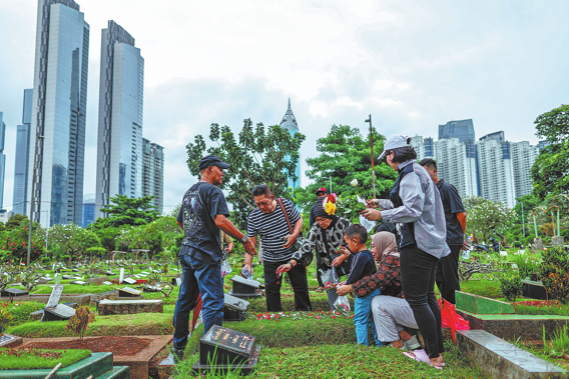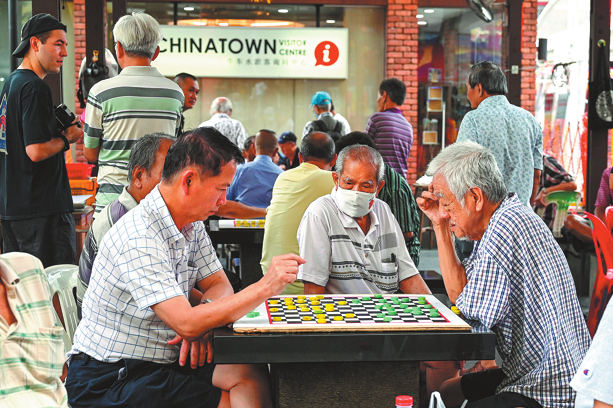Museums turn to technology for relics care
Forum highlights China's role and youth engagement in fostering understanding


As vital carriers of civilization, museums must embrace new trends and engage more young people in better safeguarding cultural heritage and fostering greater mutual understanding among civilizations, officials and scholars said in Dubai during the weeklong 27th General Conference of the International Council of Museums that runs through Monday.
Hala Badri, director-general of Dubai Culture and Arts Authority and chairwoman of the conference's organizing committee, said new technologies and youth engagement were among pillars of the first such event — the world's largest gathering for museum professionals — that took place in the Middle East.
"They embody our shared commitment to preserving living cultural practices, empowering young people as drivers of innovation, and harnessing digital transformation, artificial intelligence and virtual interaction to create more inclusive and impactful cultural experiences," she said.
As the world undergoes rapid technological transformation, Harith Al Battashi, an expert from the National Museum of Oman, said that attracting and nurturing responsible young talent stands as the core mission of all museums.
"No civilization is superior to another — mutual respect and joint efforts are the only way forward. On this foundation, embracing cutting-edge technologies like AI is key to effectively transforming museums from mere relic collectors into true guardians of civilizations," he said.
He lauded Chinese video game Black Myth: Wukong as an outstanding model for Global South nations to engage young audiences and promote Chinese culture globally.
"In the past, I knew little about Chinese folklore, but when I played the game, I was amazed by its exquisite craftsmanship and the richness of Chinese culture. Now I am very eager to visit China in person," he said.
"Integrating cultural heritages into gaming has ignited global enthusiasm. This innovation demonstrates that young people can be drawn to heritages via mediums they embrace, bridging the gap between tradition and youth culture."
At a museum fair affiliated with the conference, Zhejiang University's Department of Cultural Heritage showcased the International Alliance of Teaching Museology in University — a cross-regional academic initiative launched last year and led by the university, which seeks to advance specialization, coordination and sustainable development in global museum education and professional training.
The alliance has nearly 20 members, mainly from East Asia, Europe and North America, said Fu Yi, an associate professor with the department.
"All members are willing to share our teaching resources. That's why we are here to seek cooperation with Middle Eastern universities. We aim to establish a more open museology education system in collaboration with local universities as we are prepared to offer them tailored courses."
Integrated services
For museums, adopting new technologies to safeguard cultural relics is also a crucial aspect. Chinese companies with core technologies have turned their attention to the Middle East, providing comprehensive solutions and integrated services for regional museums.
Bangda Group in Ningbo, Zhejiang province, introduced its "breathable" customized storage facilities capable of withstanding earthquakes up to magnitude 9.
"All air temperature and humidity data are displayed in real time on electronic screens, and the slightest deviation will trigger an immediate alert on the administrator's control panel," said Zhu Jianhua, chairman of Bangda. "Meanwhile, we can adjust the oxygen-nitrogen ratio in the storage space to minimize fire risks to the greatest extent without compromising staff health."
The company holds more than 100 invention patents, and its products have been adopted by China's cultural institutions, including the Palace Museum, the company said on its website.
"Museums are guardians of civilization, and storage facilities are the heartbeat of museums. Our products are designed to ensure cultural relics can 'rest securely'," Zhu said.
Omar Al Kaabi, an official from the Department of Culture and Tourism in Abu Dhabi, said the Zayed National Museum of the United Arab Emirates will open to the public next month.
"As a national museum, we have incorporated advanced VR and AI technologies to showcase our cultural history," he said. "Though the UAE is a young nation, our land has a 300,000-year history of human habitation. We will adopt all latest technologies for heritage protection and promotion, and we certainly welcome that from China."

































